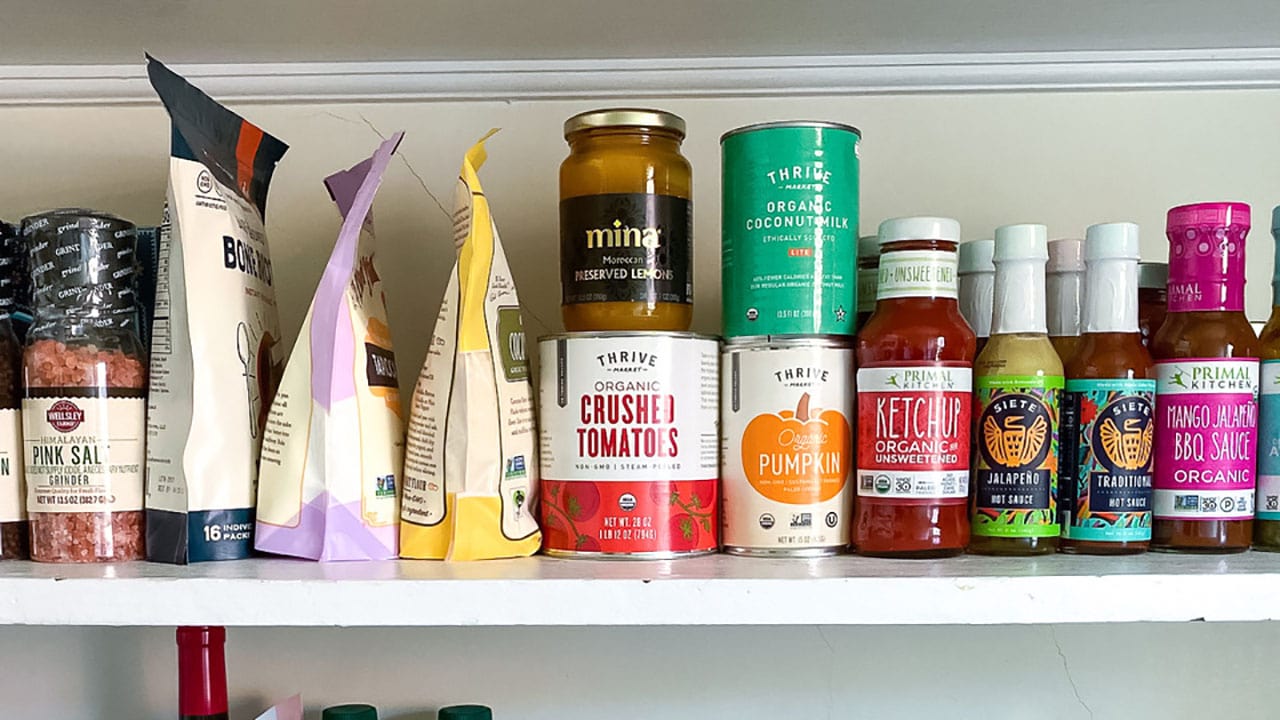Last Updated on September 29, 2020
This is a guest post by Jennifer Hanway, a board-certified holistic nutritionist, certified personal trainer, and a health and wellness writer and speaker. You can check out her site for more.
Every time I visit Amy, my mother-in-law, at her home in upstate New York, I marvel at her organizational prowess. Her pantry and cupboards are the pictures of cataloged co-ordination, with handwritten lists of everything contained in each cupboard, which she updates with every visit to the grocery store.
Those lists were my goal. As a nutritionist who develops recipes and meal plans for her clients I have to be pretty organized when shopping for groceries, but somehow I never quite reached those heady heights of my MIL.
But then things changed.
When we first started to see that shopping would be a different experience with the current state of the world, I suggested to my husband that we go to the grocery store to stock up. At the time there were rumors of food shortages, so I wanted to make sure we were prepared for the trip. We are very healthy eaters and avoid packaged, processed foods as much as possible, so I knew I would have to be organized to make this trip quick, stress-free and to ensure I didn’t forget what I needed and have to make multiple trips.
It was time to unleash my inner Amy…
1. Take Inventory of What You Have
Go through your pantry, cupboards, freezer, and fridge, and write down what you already have.
Rearrange your storage in a way that makes sense to you. Maybe, organize all baking goods on one shelf, sauces on another—for me this looks like things we use often on the lower shelves as I’m so short. Do what grocery stores do and put the items with the longest “best before” dates at the back of the cupboard and shortest at the front so nothing accidentally goes to waste.
Do this for your pantry, cupboard, freezer, and fridge.
If you have perishables that need eating quickly make sure you put these towards the beginning of the meal plan that you are going to make in the next step.
2. Make a Flexible Meal Plan For the Next 1-2 Weeks
Coordinate with the rest of the members of the family to plan out your meal schedule for the next one-to-two weeks. Find out who will be home for which meals and snacks, and if “to-go” meal and snack options will be needed for when people are away from the house. Also, note down the times you may wish to dine out or get delivery from your favorite restaurant.
Once you have this information, build out a flexible meal plan for your household. I recommend building all your meals around great proteins, 2-3 servings of vegetables, healthy fats, and some clean carbohydrates.
I have my clients choose a “base” for each meal that can be modified so that each member of the family can enjoy a meal specific to their tastes or needs. For example, I love smoothies for breakfast as they are a quick and easy option that can be tailored to personal tastes. For main meals, a big pot of chili can lead to multiple options—low carb eaters can have cauliflower rice as a side, and those with bigger appetites can add sweet potato wedges or rice. This means you only have to make one main dish at mealtimes, saving time and money.
For big families and/or busy schedules, I suggest making a spreadsheet of this info to be kept in the kitchen. This spreadsheet can even include who is on cooking or dish cleaning duty. More than anything, it helps to keep you on track and organized for the week.
3. Build Your Shopping List
Divide your list into categories—I typically do this based on the layout of my grocery store. For example your list may be divided into the following: Fresh Produce, Dairy and Dairy Alternatives, Dried Goods (pasta, rice, etc.), Sauces, Snacks, and Frozen Goods. (Of course, we buy our meat from ButcherBox!)
Look at your meal plan, and identify the “base” for each meal. This will typically be the protein and veggies that make up the bulk of the meal. Work from the largest to the smallest ingredient. For our chili example, we would start with the grass-fed ground beef and end with the seasonings. Add these ingredients into their respective categories on your list.
4. Cross Reference Your Grocery Lists With Your “In Stock” List
Check the lists you made at the beginning of this process with your new grocery list, and check off anything that you already have in stock. If you have perishable goods that need to be eaten quickly adapt your meal plan to reflect those foods—this is why it’s “flexible.” And if those ingredients don’t quite fit your usual recipes, now is the time to get creative—why not use that slightly limp lettuce as a healthy burger bun or add beets to your breakfast hash?
5. Be Flexible With Your Purchases
Right now grocery shopping can be a little challenging, and at times even stressful.
The key to managing this stress is to have a plan (for example, your categorized lists) and to be flexible in achieving it. There are alternatives to pretty much every food group you can think of, and this can even be a time to discover new ingredients that you had never even tried!
No zucchini for zoodles, try spaghetti squash! Out of quinoa, why not try amaranth instead?
By creating your plan and your lists in advance you know how much of each food group you need, and can find suitable alternatives. This is way less stressful than winging it in the grocery store and coming home with five boxes of fruit loops and a jar of salsa.
Jennifer Hanway is a board-certified holistic nutritionist, a certified personal trainer, and a sought after health and wellness writer, speaker, and podcast guest. Her work has appeared in O, The Oprah Magazine, Well+Good, and the Party in My Plants Podcast.




